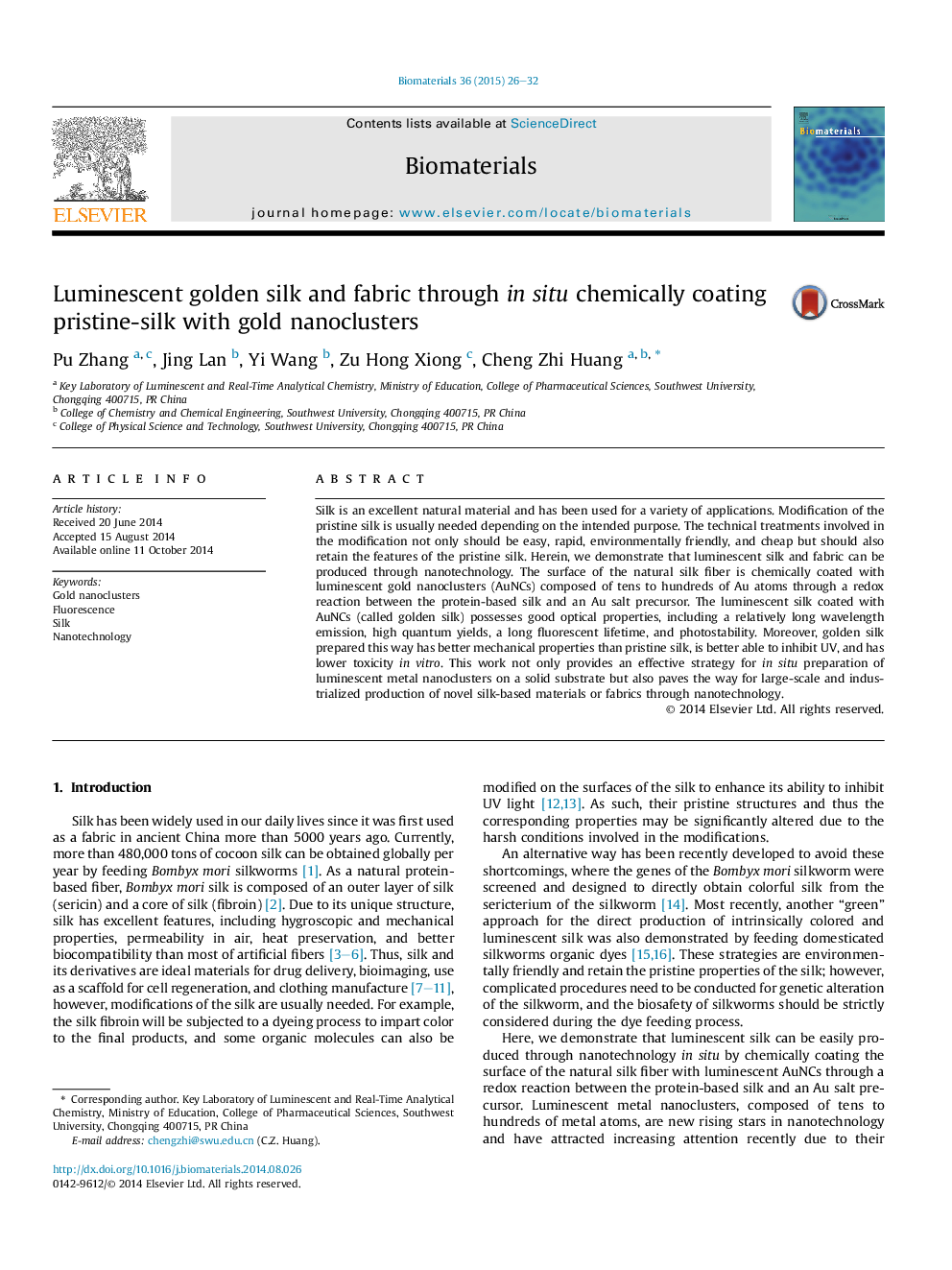| Article ID | Journal | Published Year | Pages | File Type |
|---|---|---|---|---|
| 6486502 | Biomaterials | 2015 | 7 Pages |
Abstract
Silk is an excellent natural material and has been used for a variety of applications. Modification of the pristine silk is usually needed depending on the intended purpose. The technical treatments involved in the modification not only should be easy, rapid, environmentally friendly, and cheap but should also retain the features of the pristine silk. Herein, we demonstrate that luminescent silk and fabric can be produced through nanotechnology. The surface of the natural silk fiber is chemically coated with luminescent gold nanoclusters (AuNCs) composed of tens to hundreds of Au atoms through a redox reaction between the protein-based silk and an Au salt precursor. The luminescent silk coated with AuNCs (called golden silk) possesses good optical properties, including a relatively long wavelength emission, high quantum yields, a long fluorescent lifetime, and photostability. Moreover, golden silk prepared this way has better mechanical properties than pristine silk, is better able to inhibit UV, and has lower toxicity in vitro. This work not only provides an effective strategy for in situ preparation of luminescent metal nanoclusters on a solid substrate but also paves the way for large-scale and industrialized production of novel silk-based materials or fabrics through nanotechnology.
Related Topics
Physical Sciences and Engineering
Chemical Engineering
Bioengineering
Authors
Pu Zhang, Jing Lan, Yi Wang, Zu Hong Xiong, Cheng Zhi Huang,
